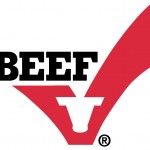 I need your help. The Humane Society of the United States is working to vote Carrie Underwood in as ACMA Entertainer of the Year to launch her as a better spokesperson for their agenda to abolish animal agriculture. I’m challenging everyone to head over to the ACMA website and vote. Read the following excerpt, and tell me you don’t want to stand up for agriculture today! It only takes a minute to register, and I voted for George Strait because he is a great singer, a PRCA member, a team roper and a true friend to agriculture! You should too! Word-of-mouth is definitely agriculture’s best marketing tool, no? Make a difference and cast your vote today!
I need your help. The Humane Society of the United States is working to vote Carrie Underwood in as ACMA Entertainer of the Year to launch her as a better spokesperson for their agenda to abolish animal agriculture. I’m challenging everyone to head over to the ACMA website and vote. Read the following excerpt, and tell me you don’t want to stand up for agriculture today! It only takes a minute to register, and I voted for George Strait because he is a great singer, a PRCA member, a team roper and a true friend to agriculture! You should too! Word-of-mouth is definitely agriculture’s best marketing tool, no? Make a difference and cast your vote today!
The Humane Society of the United States (HSUS), the most radical animal “rights” and anti-hunting organization in the country, has been quietly trying to get Carrie Underwood voted Entertainer of the Year via the Academy of Country Music. The problem is, a large percentage of country music fans are also gun owners and hunters who do not like Carrie Underwood’s active support for HSUS. And HSUS knows it.
Underwood and American Idol have already listed HSUS as a beneficiary of the proceeds of one of her songs and now HSUS is enlisting their radical animal rights supporters to vote for her in the Entertainer of the Year contest. But they are trying to keep it quiet. In an e-mail sent out to supporters by Kathy Bauch, the HSUS Senior Director for Corporate Relations & Promotions, she asked people to vote for Underwood, but added, “Feel free to distribute this to friends and family, but please don’t post to lists, twitter, etc.–anything that would identify that HSUS is urging people to vote for her, or it could just breathe life into the opposition.”
Oops, too late! Perhaps someone should tell the folks at HSUS that e-mails are not exactly the most secure way of communicating their “secret” agendas. Country music fans who do not appreciate Underwood’s support for HSUS should go and vote for an entertainer who shares their values and supports America’s hunting heritage. Please share this with every meat-eating, freedom loving American you know and then VOTE!!!

 I drove through a pretty impressive storm coming home this afternoon. The skies mostly cleared up and the sun came back out. It made for some interesting cloud formations like this one.
I drove through a pretty impressive storm coming home this afternoon. The skies mostly cleared up and the sun came back out. It made for some interesting cloud formations like this one.
 I saw about 8 farm machines working in the field during a 400+ mile drive today through Missouri/Illinois/Indiana and Kentucky. Of those, 6 were green. Just in case you were wondering.
I saw about 8 farm machines working in the field during a 400+ mile drive today through Missouri/Illinois/Indiana and Kentucky. Of those, 6 were green. Just in case you were wondering. AgWired.com will be there as the Farm Foundation hosts the next in its series of meetings to talk about what needs to be done for this country… and the world, for that matter… transition to a bioeconomy.
AgWired.com will be there as the Farm Foundation hosts the next in its series of meetings to talk about what needs to be done for this country… and the world, for that matter… transition to a bioeconomy. Last October, a new checkoff-funded program was released called
Last October, a new checkoff-funded program was released called